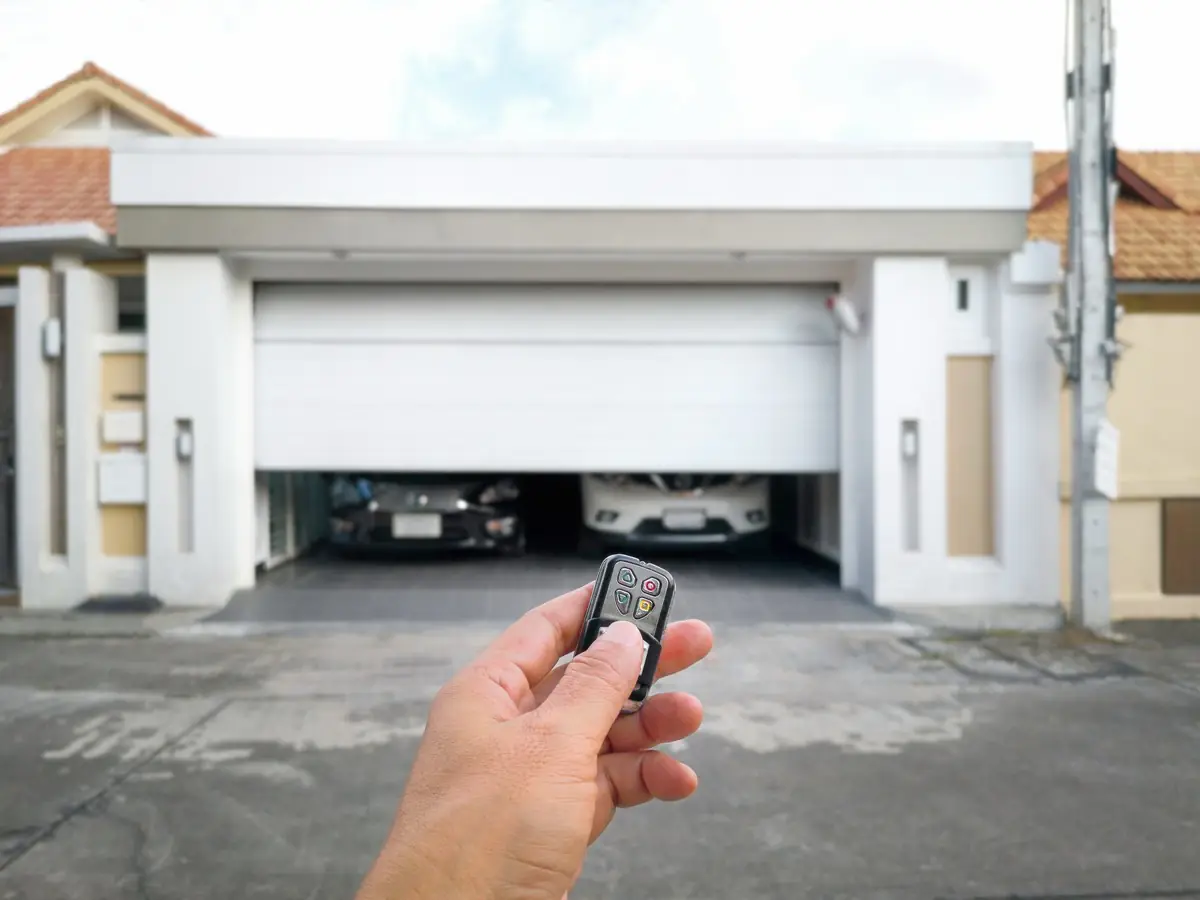Your garage door opener is important for keeping your door working well. It helps the door close safely and keeps everything secure.
However, sometimes problems happen. Issues like safety sensors that are not aligned, errors with limit settings, or problems with the wiring can make the garage door closes then opens right away.
These Garage Door Closes Then Opens issues can be annoying and may even cause security problems. In this blog, we will look at common reasons for this issue and some fixes to help your door work correctly again.
Key Takeaways
- A malfunctioning remote control or wall button can result in erratic garage door activity.
- Identical frequencies or signal interference might cause the door to open and close randomly.
- Misaligned safety sensors or obstructions in the door’s path can trigger reverse mechanisms.
- Limit settings issues or faulty components, like springs and openers, disrupt proper operation.
- Damaged control wiring or electrical circuits are also common culprits for unexplained behavior.
Remote and Wall Button Issues
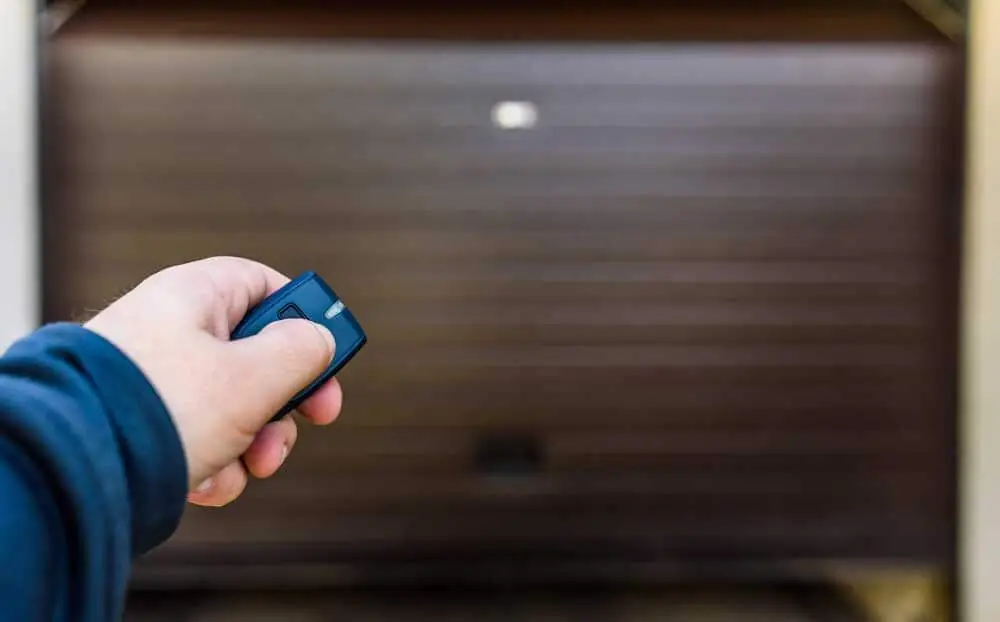
Remote controls and wall buttons are important for your garage door system. Problems with these devices can lead to the door not working correctly, which can be frustrating. Issues like jammed buttons, dead batteries, or faulty wiring can cause big problems even though they seem small.
Having working wall and remote controls is necessary for the smooth operation of your garage door. Keeping them maintained and making sure they don’t have any damage or stuck signals can help stop the door from moving back unexpectedly.
1. How remote control malfunctions affect garage door behavior
A failing remote control can disrupt your garage door opener’s functionality. Stuck buttons or dead batteries may send random signals, causing the door to open and close unexpectedly. If your remote is stored where buttons are pressed, it can exacerbate the issue with repeated signals that confuse the system.
Replacing batteries or cleaning debris from the buttons often resolves many remote issues. If these solutions don’t help, it’s wise to consult a garage door professional who can assess both your remote and opener. Malfunctions caused by faulty remotes might indicate larger problems.
Whether dealing with erratic signals, worn batteries, or stuck buttons, improving your remote’s performance ensures smooth garage door operation and prevents further complications.
2. Importance of proper wall button installation
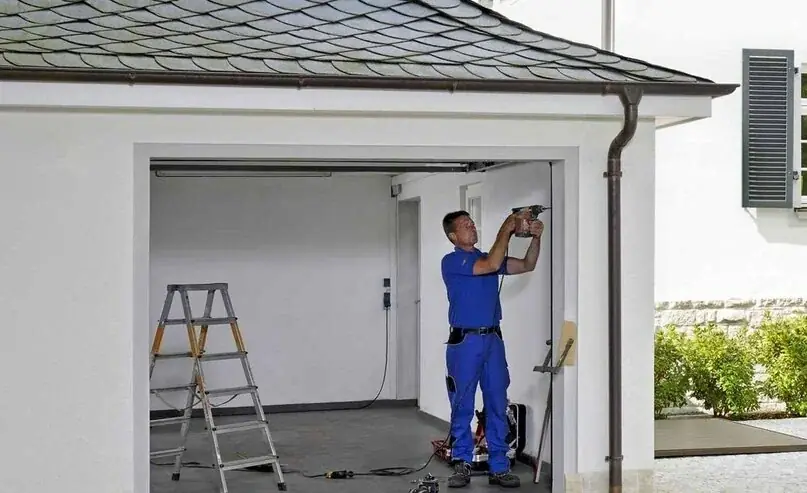
Correctly installing the wall button is very important for the garage door system to work well. If the button is not lined up right or isn’t connected properly, it can cause problems. The door might open or close by itself, which can be dangerous.
This kind of issue usually comes from bad connections in the control wiring or broken sensors. By making sure the button is installed the right way, you help keep the limit settings safe. This adds to safety and stops risks that come with a malfunctioning garage door. Proper installation is essential.
Interference from Identical Frequencies
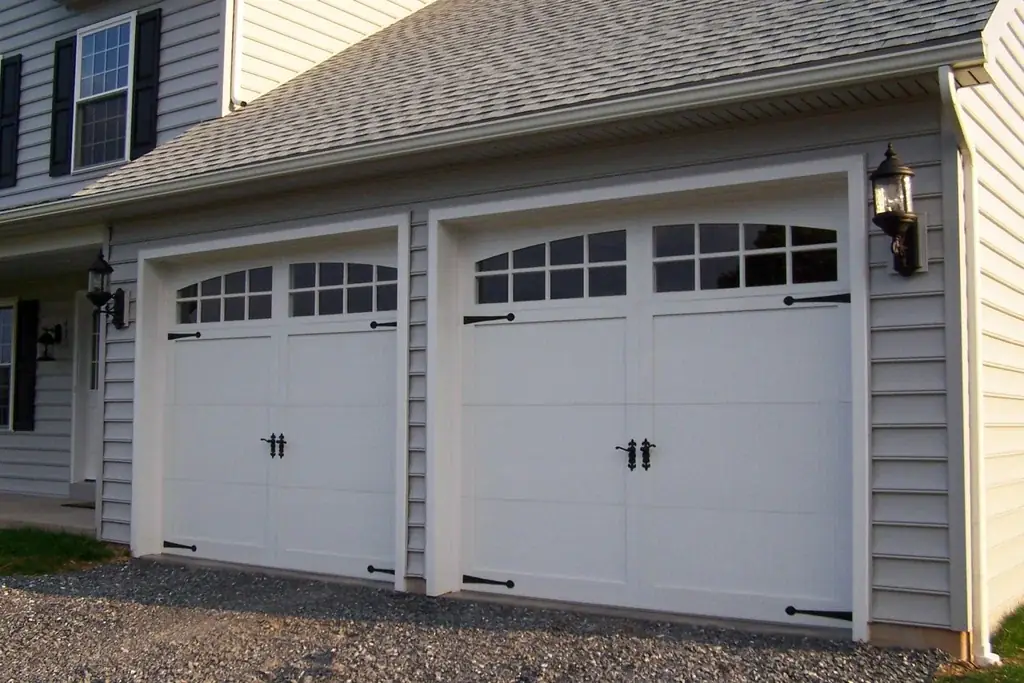
Signal interference can be a problem for garage door systems. This happens when two similar frequencies or random signals get in the way. Older models, which rely on fixed frequencies, are especially affected. If your neighbor uses the same frequency, your garage door might open or close by itself without you wanting it to happen.
Newer models may face interference from overlapping transmitters. To fix this, you can reset the codes. Taking care of signal interference helps your garage door work like you want. It keeps your home secure and makes life easier for you.
3. Recognizing signal interference issues
Signal interference happens when random signals interrupt how your garage door works. Garage doors set to a specific frequency can easily be disrupted by nearby systems or other electrical circuits. This interference can cause your door to open and close unpredictably.
For instance, your neighbor’s remote could unintentionally activate your garage door. To find this issue, you may need to test if your door moves at the same time as theirs. Newer systems can track transmitter signals, and clearing histories along with reprogramming can help fix overlapping signal problems.
Additionally, random interference from electrical circuits can also impact the specific frequency needed for the door to function correctly. If you’re dealing with frequency issues, it’s a good idea to call a garage door technician. They can adjust the settings and help protect your system from future interference.
4. Steps to reset your garage door codes
Resetting your garage door codes is vital for home security, preventing unauthorized access and ensuring optimal performance. Start by consulting your manufacturer’s manual for specific instructions. Most modern openers feature an LCD control panel for resetting and programming transmitters.
To reset, clear the memory by pressing the designated button on the motor unit to erase stored transmitters. Then, reprogram your remote or wall button with new codes that differ from nearby devices to avoid interference.
Regularly resetting codes keeps your garage door system secure and functioning properly. If you encounter difficulties or persistent issues, consider contacting a professional who can assist with resets and troubleshoot problems like faulty circuits or incorrect settings.
Common Reasons Your Garage Door Closes Then Opens Instantly
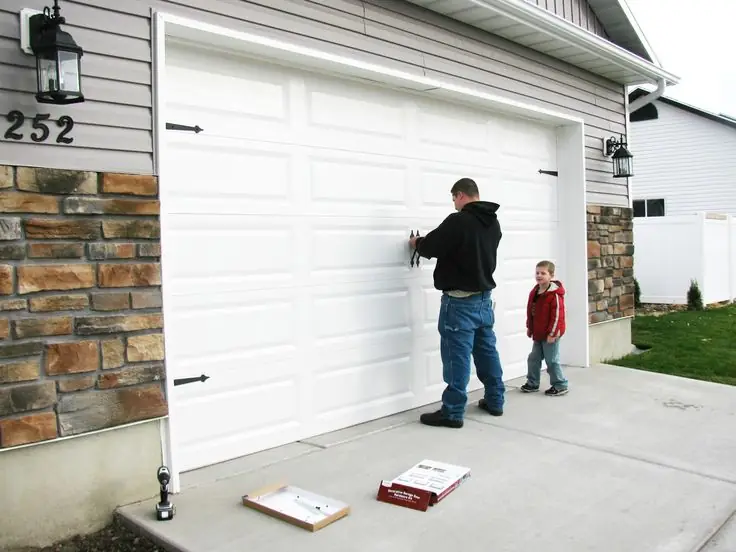
Unexpected reverse movements in garage doors can happen for many reasons. Misaligned safety sensors can stop the door if they see something blocking its path. Physical objects at the bottom of the door can also make the safety system react.
If the limit settings are wrong, the garage door closes then opens again as a safety measure. Also, broken garage door openers or springs can lead to problems with how the door moves. Early diagnosis of a “Garage Door Closes Then Opens” issue, with help from a professional, can make it easier to fix these problems.
5. Misaligned Safety Sensors
Safety sensors help find obstacles and keep accidents from happening. If they are not aligned right, they may not work well. Misaligned sensors can confuse the system. This makes the door move as if there is something blocking it, even when the way is clear.
Sensors can get misaligned from bumps or just wear over time. To check for misalignment, look at the LEDs on the sensors. If they are dim or flicker, the sensors probably need adjusting. You can fix this by moving them back into the correct position so they reconnect their infrared beam.
If there is damaged wiring, a garage door technician can check for loose connections or short circuits that are messing with the alignment. Keeping the sensors properly positioned and connected helps them work well and maintain safety features.
6. Obstructions in the Door’s Path
Garage door systems have safety sensors. These sensors make the door go back up if they spot something blocking the way. Things like boxes or debris at the bottom of the door can trigger these sensors and stop the door from closing completely.
Weather can also cause problems. Snow or ice can block the sensors and stop them from working. To keep everything running smoothly, it’s important to remove any obstructions from the garage door’s path. This way, the reversing mechanism can work properly when the path is clear.
If you still have problems after removing the obstructions, there might be an issue with the sensors. It’s a good idea to contact a garage door professional. They can help fix any problems and ensure the safety sensors are working right. This can also solve other issues like damaged wiring.
7. Limit Settings Need Adjustment

The limit settings in your garage door system decide where the door stops when it opens or closes. If these limits are not set correctly, the door might reverse unexpectedly. This happens because the system thinks it has not reached the ground or sees something blocking it.
Incorrect travel settings cause a similar issue. The opener may reverse when it hits the ground before reaching the end position. These problems can happen due to changes in the environment or wear and tear on the system. Fixing these settings helps the garage door system know the right places to open and close.
Limit switch problems might also be caused by wiring issues. Since adjusting these delicate parts can lead to more problems, it is best to call a garage door technician. They will make sure the settings are correct and follow safety rules.
8. Faulty Garage Door Opener
A broken garage door opener stops it from working well. The motor unit can wear out or electrical surges might affect how the door opens and closes. This can leave the door stuck or make it go back up partway.
Fixing these openers usually means checking the motor’s inner parts, control circuits, or logic board. Sometimes, a replacement is needed if the opener is too old or badly damaged to repair.
If there are problems with electrical circuits or wear and tear, it is best to call garage door opener repair experts. This helps make sure your door will work well for a long time. Ignoring these issues can lead to bigger problems, making it harder to deal with the whole system.
9. Broken or Worn-Out Springs
Garage door springs handle a lot of the stress when opening and closing the door. If these springs break or get worn out, the door might not close right or could act strangely.
If you see broken springs, you need to get help quickly. Trying to check them yourself can be dangerous. Replacing broken springs helps the garage door work better and fixes any problems from uneven weight.
To keep your garage door in good shape, check the springs often. This helps avoid breakage from getting old or being under too much strain. Getting a garage door professional to help ensures that the springs are replaced safely. They can also check other important parts, such as the rollers and tracks.
Conclusion
Understanding why your garage door closes then opens on its own is essential for safety and convenience. Common issues include remote control malfunctions, frequency interference, misaligned safety sensors, and faulty parts. Identifying and addressing these problems, or seeking professional help, ensures your garage door operates safely and efficiently.
Don’t let a malfunction disrupt your daily life—stay informed and proactive. For further questions or assistance, consult our FAQ section or contact a professional. Your garage door should provide smooth operation for your safety and peace of mind at home.
Frequently Asked Questions
1. Why does my garage door reverse immediately after closing?
Garage door problems with reversing often happen because safety sensors see things in the way or limit switches are not lined up correctly. These features help avoid accidents by making sure there is enough space while the door moves. To fix this, check the alignment and adjust the settings for better security.
2. Can weather conditions affect garage door sensors?
Weather changes can affect your garage door sensors. Debris or damaged wires can cause the photo-eye lenses to not work properly. Conditions like snow or interference from sunlight can impact the garage door system’s reliability. This means you should check and repair it quickly.
3. What should I do if changing the remote frequency doesn’t work?
If changing the remote frequency does not fix the issue, look for anything nearby that may be interfering. Check that your garage door opener has power and make sure the remote batteries are new. If you still have problems, it is a good idea to see a professional for more help.
4. Why is my garage door closing and then reopening?
Misaligned safety sensors or blocked pathways can lead to the garage door moving backward when it closes. To fix this, adjust the alignment of the sensors and remove any obstacles. This will help make sure the garage door operates safely and securely.
5. How do I reset my garage door sensor?
To reset garage door sensors, you should clean the lenses. Make sure the sensors are aligned when you reconnect the wiring. Position the invisible beam correctly and check that the circuit board is working. This ensures safe operation of your garage door without problems or unexpected reversals.
6. Why does my garage door close then open a few inches?
Inadequate limit settings or travel settings often cause reverse movements, even when they are partially closed. To fix this, you should adjust the calibration. Make sure the set limits meet the right standards so they can close smoothly.
7. What causes a garage door to open and close slowly?
Sluggish garage door movements can come from a few issues. Worn motor units, electrical damage, and frayed control wiring can all cause problems. Power outages and misalignments also require a close look. You may need skilled professionals to inspect and possibly rewire these issues.
8. Why does my garage door close then open on its own?
Random signals from electrical circuits or issues with the logic board can lead to unexpected movements. Getting in touch with experts can help recalibrate affected systems. This way, you can avoid more problems with door controls.
9. Why does my garage door open again after closing?
Faulty sensors or issues with limit switch alignment can cause reversed closing positions. By checking and fixing alignment gaps, you can improve safety and cut down on problems related to obstructions.
10. Why does my garage door open on its own at night?
Garage doors that open by themselves at night often do so because of random signals or electrical surges. If wiring is damaged or has exposed areas, it can make the problem worse. You may need to call a professional to fix it safely.

